Ford Focus (2011-2018) Review
One of Britain’s best-selling cars, the Ford Focus offers a very appealing combination of quality and value
Strengths & weaknesses
- Handles very nicely
- Highly economical diesels
- Turbocharged petrols perform well
- Boot could be bigger
- Some reliability and build quality concerns
- Petrols can struggle to match claimed economy
Ford Focus prices from £7,499 Finance from £170.30 per month
The Ford Focus is Britain’s most popular family car, thanks to its Ant and Dec-like abilities to handle any job with charm and polish. Whether it’s a long-distance motorway journey or simply the school run on a rainy day, the Focus is up to the task.
It was replaced with an all-new Ford Focus in 2018, but remains an excellent used buy thanks to low prices (which start at £7,499 or from £170.30 per month on finance from BuyaCar). As well as offering a comfortable ride, the Focus is also fun to drive thanks to direct and accurate steering that allows the driver to feel the grip and position of the tyres. This also comes in handy when threading the car through narrow gaps.
The engines remain competitive, offering good fuel economy across the range, whether you opt for petrol or diesel. For the ultimate in fuel economy, an electric version was available but few were sold. At the opposite end of the spectrum, the Ford Focus ST hot hatch and Focus RS are quick and enormous fun to drive.
In production between 2011 and 2018, the Focus was updated throughout its life in an attempt to keep up with the competition, but the family hatchback was feeling its age towards the end of its life. The dashboard in particular is fussy and feels cheaper than that of the smart and sophisticated Volkswagen Golf – which is more expensive - or the Vauxhall Astra, which offers a similar blend of comfort and driving enjoyment as the Focus.
The Focus also came under attack from crossovers, which combine the agile cornering and fuel economy of a hatchback, with the higher driving position of an off-roader. Buyers are increasingly opting for these cars the best of which include the Peugeot 3008, Seat Ateca and Volkswagen Tiguan.
The Focus also suffers from a small boot in comparison with both crossovers and other hatchbacks, which makes the Ford Focus Estate, with more luggage room, a better option for many buyers.
Air conditioning, alloy wheels and a variety of airbags came as standard on virtually every used Focus, while you might find higher-specification models with self-parking and steering assistance to keep you in your lane.
When tested by Euro NCAP in 2012, the Focus achieved a five-star safety rating.
If you do buy one, you’ll be safe in the knowledge that there are so many cars on the road, that it will be easy and cheap to repair. In fact, Ford Focus hatchbacks are common that it’s classless: even Prince William had one when he was learning to drive.
Key facts
| Warranty | Three years/60,000 miles |
|---|---|
| Boot size | 316 litres |
| Width | 1,823mm |
| Length | 4,360mm |
| Height | 1,469mm |
| Tax (min to max) | (min to max): £0 to £205 |
Best Ford Focus for...
Best for Economy – Ford Focus 1.5 TDCi 105 Style ECOnetic
‘ECOnetic’ is Ford’s name for measures designed to maximise efficiency, such as special tyres and more aerodynamic bodywork. The Focus ECOnetic can return up to 83.1mpg and is exempt from road tax due to its low CO2 emissions.
Best for Families – Ford Focus 1.0 EcoBoost Titanium
The 1.0-litre EcoBoost engine punches above its weight, delivering performance you might expect from a 1.4 or 1.6-litre engine. And the Titanium spec includes extra safety kit such as automatic emergency braking, automatic headlights and parking sensors for greater peace of mind.
Best for Performance – Ford Focus 2.0T ST-2
Ford’s Focus ST is one of the best (and best-priced) hot hatchbacks there is. It has three trim levels of its own: ST-1, ST-2 and ST-3. ST-2 strikes the best price/equipment balance.
One to Avoid – Ford Focus 1.6 125 Style Powershift
The combination of the sparsely-equipped Style trim level, old-fashioned 1.6-litre petrol and inefficient automatic gearbox make this the least desirable Focus in the range.
History
- September 2010 All-new third-generation Focus announced
- April 2011 Efficiency-focused ECOnetic model added
- August 2011 Cheap, bare-bones Studio trim introduced (discontinued 2014)
- August 2013 Tax-exempt 1.0-litre EcoBoost engine added
- March 2014 Heavily updated version revealed
- April 2018 All new Ford Focus announced
Understanding Ford Focus names
Engine 1.0 EcoBoost 125
The engine size is given in litres - 1.0 in this case. Petrol engines are either badged Ti-VCT or - for the most efficient - EcoBoost. There are TDCi diesels. Engine horsepower is given in PS, a similar measure to bhp. In this example, 125PS is 123bhp
Trim Zetec S
Regular Focus trim levels run from Style to Zetec, Zetec S, Titanium and Titanium X, while the ST hot hatchback has three trims: ST-1, ST-2 and ST-3
Sat-nav Navigation
Navigation indicates that the model has sat-nav fitted
Gearbox Auto
Manual or automatic transmission is offered
Ford Focus Engines
Petrol: 1.0T EcoBoost, 1.5T EcoBoost, 2.0T EcoBoost, 2.3T EcoBoost
Diesel: 1.6 Ti-VCT, 1.5TDCi, 2.0TDCi
The least-expensive Focuses used to come with a basic 1.6-litre petrol engine called Ti-VCT. It was cheap because it didn't use the very latest technology or a turbocharger like the more modern ‘EcoBoost’ petrols do.
You'll find plenty of these on the used market and they tend to be the lowest-priced cars, but they do feel underpowered, whether you opt for the 85 horsepower (hp) or 105hp version - lots of gearchanges and hard acceleration are needed to speed up at the same rate as most other traffic.
It means that the most recent entry-level cars are a much better bet. These are petrol-powered cars, badged EcoBoost. Their engines are small but turbocharged, which is meant to increase power and return good fuel economy. These start from £7,499.
The EcoBoost range includes 1.0 and 1.5-litre engines, with power outputs ranging from 99 all the way up to a hefty 181bhp. In all honestly, the 99bhp will be more than sufficient for most needs, which is why this engine plus the Titanium trim level is our top recommendation for family buyers.
Higher-mileage drivers (covering 12,000 miles per year or more) or those who just spend a lot of time on the motorway when they do drive, will probably be better off with the 1.5-litre diesel. In 94bhp form it’s a bit sluggish, but the peppier 118bhp version is a strong all-rounder. There’s also a 2.0-litre 148bhp diesel, but although it’s also an impressive performer, it’s only available in the expensive top-of-the-range Focus Titanium X, making it hard to recommend.
A 182bhp version of this diesel engine was added to the range exclusively to power the diesel version of the Focus ST hot hatchback. We still prefer the 2.0-litre EcoBoost-powered petrol ST, though.
|
Fuel |
Mpg |
Bhp |
0 - 62mph |
Top speed |
|
|
1.0T EcoBoost |
Petrol |
61.4mpg |
99bhp |
12.5s |
115mph |
|
1.0T EcoBoost |
Petrol |
51.5mpg |
123bhp |
11.0s |
120mph |
|
1.5T EcoBoost |
Petrol |
51.4mpg |
148bhp |
9.2s |
129mph |
|
1.5T EcoBoost |
Petrol |
46.3mpg |
181bhp |
8.6s |
138mph |
|
2.0T EcoBoost |
Petrol |
41.5mpg |
247bhp |
6.5s |
154mph |
|
2.3T EcoBoost |
Petrol |
36.7mpg |
316bhp |
4.7s |
165mph |
|
1.6 Ti-VCT |
Petrol |
47.9mpg |
84bhp |
14.9s |
106mph |
|
1.6 Ti-VCT |
Petrol |
47.9mpg |
104bhp |
12.3s |
116mph |
|
1.6 Ti-VCT |
Petrol |
44.8mpg |
123bhp |
11.7s |
120mph |
|
1.5 TDCi |
Diesel |
83.1mpg |
94bhp |
12.0s |
112mph |
|
1.5 TDCi |
Diesel |
67.3mpg |
118bhp |
10.5s |
120mph |
|
2.0 TDCi |
Diesel |
70.6mpg |
148bhp |
8.8s |
129mph |
|
2.0 TDCi |
Diesel |
64.2mpg |
182bhp |
8.1s |
135mph |
Ford Focus Trims
Style, Zetec, Zetec S, Titanium, Titanium X, ST-1, ST-2, ST-3, RS
Before the early 2014 update, a bare-bones model called Studio kicked off the Focus range, but that’s now been discontinued. The current entry-level model is called Style, and it features air-conditioning, a digital radio, 16-inch steel wheels and heated, power-operated door mirrors, but not a great deal else in the way of luxury. Unfortunately, this is the trim you have to put up with if you want the most economical ECOnetic version of the Focus.
Zetec steps things up a bit with an eight-inch touchscreen, a driver’s central armrest, a leather-trimmed steering wheel, 16-inch alloy wheels, a heated windscreen and front foglights. Zetec S ups the wheel size further to 17 inches, as well as adding a bodykit with a spoiler, sportier suspension and eye-catching LED lights.
The Ford Focus Titanium comes with useful technology such as cruise control, ‘City Stop’ (which will brake the car automatically to avoid a low-speed shunt in traffic), parking sensors, automatic headlights, an auto-dimming mirror and rain-sensing wipers.
Titanium X is at the top of the pile of regular Focuses, featuring heated seats, more stylish alloy wheels, advanced headlights that can angle their beam in the direction you’re steering and parking assistance (which takes over the steering to help you get into tricky spots).
The Focus ST hot hatchback itself has three trim levels: ST-1, ST-2 and ST-3. We think the ST-2’s sports seats, heated windscreen and dual-zone climate control are worth the (approximately) £1,800 extra.
Ford Focus Reliability and warranty
Out of 200 cars looked at in the 2015 edition of the Auto Express Driver Power customer-satisfaction survey, the Ford Focus ranked 137th for build quality – not a great result by anyone’s standards. But it scored much higher for overall reliability, in 56th place, so you may not need to visit the widespread dealer network too frequently.
Warranty-wise, it’s a fairly standard three years or 60,000 miles of cover – whichever runs out first. Established players like Ford have been slow to react to Korean brands Hyundai and Kia offering five and seven years’ warranty cover respectively on their cars.
Used Ford Focus
Three-year old Focuses are often available for close to half of their original value – bad news for the first private owner but good news for bargain-hunting used buyers. Any of the EcoBoost petrol engines makes a good buy used – especially in well-equipped Titanium trim. Just watch out for ex-rental cars (generally just over a year old) and ex-company cars (which may have quite high mileage for their age).
| 1 year old | 2 years old | 3 years old | ||
|
Best for performance Ford Focus ST-2 |
Price | N/A | N/A | N/A |
|
Best for families Ford Focus EcoBoost Titanium |
Price | £7,499 | £7,499 | £7,499 |
|
Best for economy Ford Focus 1.5TDCi |
Price | £7,499 | £7,499 | £7,499 |
Other Editions
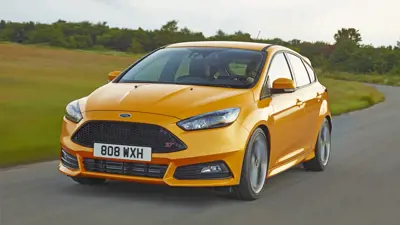
Focus ST (2012 – 2018)
The Ford Focus ST is a practical, sporty hatchback with impressive performance and a fun drive
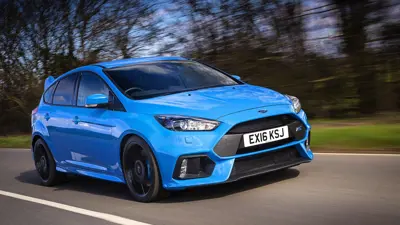
Focus RS (2016 – 2018)
Fastest Focus impresses with incredible pace - but lacks interior sophistication
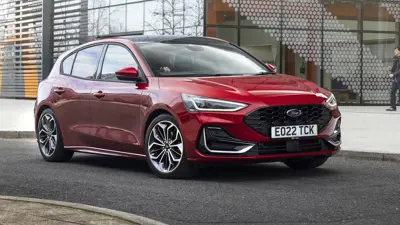
Focus (2018)
Ford’s new Focus has new tech, but keeps its excellent driving characteristics
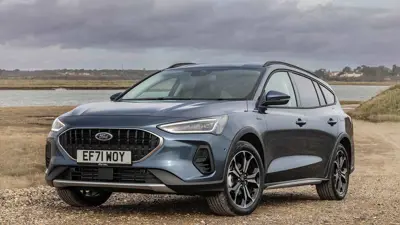
Focus Active (2019)
The Ford Focus Active is a slightly taller version of Britain's favourite family car
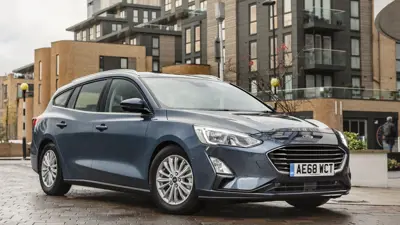
Focus Estate (2019)
Ford’s traditional small family estate combines practicality with driving fun
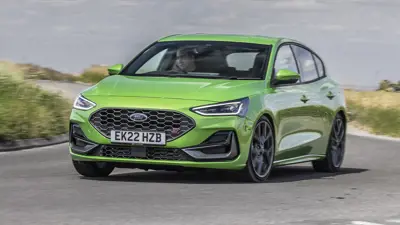
Focus ST (2019)
This hot hatch based on the excellent Focus features an overhauled engine, improved driving dynamics and blistering performance

.jpg?width=759&height=427&format=webp)
.jpg?width=759&height=427&format=webp)
.jpg?width=759&height=427&format=webp)
.jpg?width=759&height=427&format=webp)
.jpg?width=759&height=427&format=webp)
.jpg?width=759&height=427&format=webp)
.jpg?width=759&height=427&format=webp)